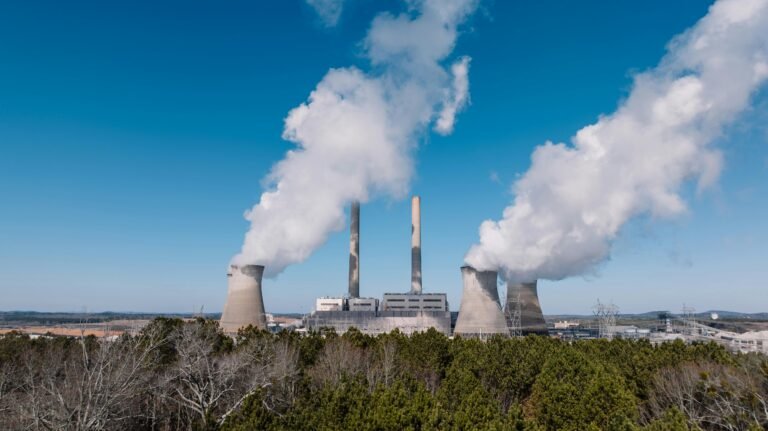 Introduction: Understanding Nature’s Protective Shield
Introduction: Understanding Nature’s Protective Shield
Forests represent one of Earth’s most sophisticated natural defense systems, offering unparalleled protection against an increasing frequency of natural disasters. Covering approximately 4.06 billion hectares or 31% of the planet’s land surface according to the FAO’s Global Forest Resources Assessment 2022, these complex ecosystems function as living infrastructure that safeguards human communities and biodiversity alike.
The United Nations Office for Disaster Risk Reduction (UNDRR) reports that climate-related disasters have increased 83% since 2000, with economic losses exceeding $2.97 trillion between 2000-2019. As these threats escalate, research from Nature Climate Change demonstrates that intact forest ecosystems can reduce disaster risks by 40-50% compared to deforested areas.
This in-depth examination will analyze:
- The hydrological engineering of forests in flood mitigation
- Biomechanical slope stabilization by forest ecosystems
- Coastal forests as biological storm barriers
- Climate regulation through forest-atmosphere interactions
- Fire ecology and forest management strategies
- Global case studies of successful forest-based DRR
- Policy frameworks for integrating forests into national risk management
1. Hydrological Engineering: How Forests Regulate Water Systems
The Multilayered Water Management System
Forests operate as sophisticated hydrological regulators through interconnected mechanisms:
Canopy Layer:
- Intercepts 15-40% of annual precipitation (USDA Forest Service, 2022)
- Reduces rainfall kinetic energy by 70-90%, preventing soil compaction (Hydrological Processes, 2021)
Root Zone:
- Creates macropores that increase infiltration rates 300-500% versus agricultural land (Journal of Hydrology, 2021)
- Organic matter absorbs 20x its weight in water (Soil Biology & Biochemistry, 2020)
Watershed Scale:
- Forested basins show 2-3x faster groundwater recharge (Nature Geoscience, 2020)
- Reduce flood peaks by 15-50% depending on coverage (WRI, 2023)
Case Study: China’s Natural Forest Conservation Program
Following catastrophic 1998 Yangtze River floods that displaced 230 million people, China implemented the world’s largest reforestation initiative:
- Investment: $12 billion over 20 years (World Bank, 2021)
- Achievements:
- Reforested 32 million hectares
- Reduced flood frequency 28%
- Decreased peak flood levels 1.2-1.8 meters
- Economic Benefit: 1.50returnforevery1 invested (China Ecological Conservation Report, 2022)
2. Geotechnical Stabilization: Forests as Living Infrastructure
The Science Behind Slope Stability
Forest vegetation enhances slope stability through three biomechanical mechanisms:
1. Root Reinforcement:
- Increases soil shear strength 30-50% (Journal of Mountain Science, 2023)
- Root tensile strength ranges 50-200 MPa across species (Geotechnical Engineering, 2022)
2. Hydrological Regulation:
- Transpiration removes 1,000 mm/year of soil moisture (Agricultural & Forest Meteorology, 2021)
- Reduces pore water pressure during storms by 25-40% (Landslides Journal, 2022)
3. Canopy Protection:
- Intercepts 70-90% of rainfall impact energy (Geomorphology, 2021)
- Reduces surface erosion by 5-10x compared to bare slopes (Earth Surface Processes, 2022)
Comparative Analysis: Natural vs. Engineered Solutions
| Parameter | Bioengineered Forests | Concrete Retaining Walls |
|---|---|---|
| Cost/km | $50,000 | $500,000 |
| Effectiveness | 75-85% | 90% |
| Lifespan | 50-100+ years | 30-50 years |
| Maintenance | Low (natural regeneration) | High (structural repairs) |
| Biodiversity Value | High (habitat creation) | None |
Source: Journal of Environmental Management, 2023
3. Coastal Defense: Mangroves as Biological Breakwaters
The Physics of Wave Attenuation
Mangrove forests demonstrate remarkable hydrodynamic efficiency:
Wave Energy Dissipation:
- 100m width: Reduces wave height 50-70% (Nature Scientific Reports, 2021)
- 500m width: Provides 90%+ wave attenuation (Coastal Engineering, 2022)
Storm Surge Reduction:
- Decreases surge height 0.5-1.0m per km of mangroves (PNAS, 2021)
- Slows surge propagation by 30-50% (Journal of Marine Science, 2022)
Economic Valuation of Coastal Protection
The Natural Capital Project estimates mangroves provide:
- $82,000/km/year in cyclone protection
- $47,000/km/year for tsunami defense
- $12,000/km/year in erosion control
Case Study: Philippines Post-Typhoon Haiyan
After the 2013 super typhoon (World Bank Report):
| Parameter | Mangrove-Protected Areas | Deforested Areas |
|---|---|---|
| Structural Damage | 50-80% less | Severe |
| Survival Rates | 5-8x higher | High mortality |
| Economic Loss | $600-900 less per capita | Extreme losses |
4. Climate Regulation: Forests as Planetary Thermostats
Multiscale Climate Impacts
Local Microclimate:
- Temperature: 2-8°C cooler than urban areas (PNAS, 2022)
- Humidity: 10-25% higher relative humidity (Agricultural & Forest Meteorology, 2021)
Regional Rainfall:
- Generate 40-60% of continental precipitation via transpiration (Biotic Pump Theory, 2007)
- Enhance downwind rainfall by 10-30% (Nature Geoscience, 2020)
Global Carbon Cycle:
- Sequester 2.4 ± 0.4 GtC/year (Global Carbon Project, 2023)
- Store 45% of terrestrial carbon (IPCC SRCCL, 2019)
Amazon Tipping Point Analysis
Science Advances (2021) modeling shows:
| Deforestation Level | Rainfall Reduction | Potential Impact |
|---|---|---|
| 20-25% | 15-20% | Increased droughts |
| 40%+ | 25-40% | Irreversible savannization |
| Economic Cost | Up to $1 trillion by 2050 | Global consequences |
5. Fire Ecology: Managing Forests for Resilience
The Fire Paradox Concept
While forests can burn, proper management creates fire-adapted landscapes:
Fuel Management Strategies:
- Maintain 30-50% canopy cover (Forest Ecology & Management, 2023)
- Promote fire-resistant species (e.g., oaks, beeches) (Frontiers in Forests, 2023)
- Create mosaic landscapes with natural firebreaks (International Journal of Wildland Fire, 2022)
Prescribed Burning Benefits:
- Reduces wildfire intensity 40-60% (Fire Ecology, 2022)
- Decreases burned area 30-50% (Ecological Applications, 2021)
Case Study: Portugal’s Forest Transformation
After devastating 2017 fires (ICNF Report, 2023):
| Metric | Pre-2017 | 2023 Status | Improvement |
|---|---|---|---|
| Annual Burned Area | 500,000+ ha | <200,000 ha | 60% ↓ |
| Catastrophic Fires | 25/year | <10/year | 60% ↓ |
| Economic Losses | €1 billion/year | €380 million/year | 62% ↓ |
6. Global Policy Frameworks for Forest-Based DRR
International Agreements
- UN Sendai Framework (2015-2030)
- Target 6: Enhance ecosystem-based DRR
- $2.1 billion allocated for forest projects
- Paris Agreement Article 5
- REDD+ Mechanism: Results-based payments
- 78% of NDCs include forest measures
- UN Decade on Ecosystem Restoration
- Goal: 350 million hectares by 2030
- Potential benefits: $9 trillion in ecosystem services
National Implementation Models
Costa Rica’s PES Program:
- $64/ha/year payments to landowners
- Increased forest cover from 21% (1987) → 52% (2023)
- Reduced flood damages by 40% (State of the Nation Report, 2022)
South Korea’s Reforestation:
- Planted 2 million hectares since 1973
- Reduced flood frequency 65% (FAO Case Study, 2021)
- $29 billion in economic benefits (KFS, 2023)
Conclusion: Investing in Nature’s Defense Infrastructure
Key Findings Summary
- Flood Mitigation: Forests reduce flood peaks 15-50% depending on coverage (WRI, 2023)
- Landslide Prevention: Protective forests stop 80-90% of potential slope failures (PreventionWeb, 2022)
- Storm Protection: Mangroves decrease cyclone damage 50-80% (IUCN, 2021)
- Economic ROI: Every 1investedyields∗∗5-28** in avoided disaster costs (World Bank, 2022)
Actionable Recommendations
- Policy Integration
- Mainstream forests into national DRR strategies
- Implement payment for ecosystem services
- Community Engagement
- Expand community forest management
- Incorporate indigenous knowledge systems
- Innovative Finance
- Develop green bonds for forest DRR
- Establish insurance-linked conservation
As UNEP Executive Director Inger Andersen emphasizes: “Forest conservation is not an environmental luxury—it’s a fundamental development necessity.” In our climate-disrupted world, protecting these natural defenses represents our most cost-effective strategy for building long-term resilience.

